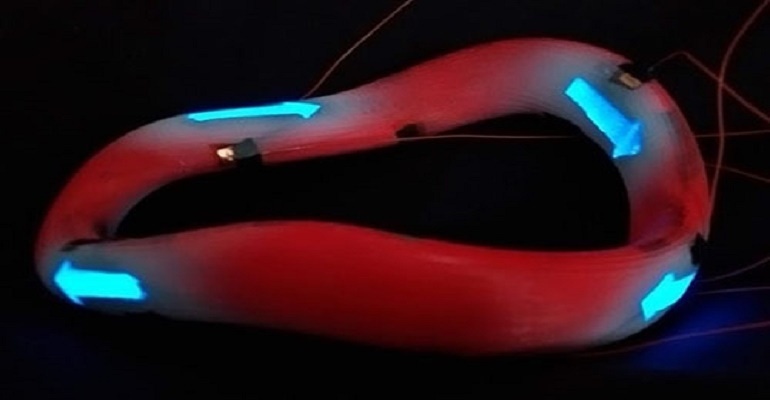New Spray-and-Print Technique Paves Way for Touchscreens in New Shapes
A combination of 3D printing and graffiti-inspired spraying allows for the design of interactive objects in various shapes.
September 2, 2020

These days the touchscreens we use on our mobile devices come in common and predictable 2D rectangular shapes. However, thanks to a new spray technique invented by a researcher at the University of Bristol, this could soon change.
Ollie Handon, a Ph.D. student at the university, has developed a process and coating called ProtoSpray that allows for displays on surfaces to go beyond rectangular or 2D shapes.
The solution, which Handon and his team developed in collaboration with the MIT Media Lab, is a combination of sprayable electronics and 3D printing inspired by how artists like Banksy paint graffiti on walls and other surfaces, Handon said.
“We aim to empower makers to create their own interactive objects in shapes that suit their uses,” he told Design News. “Rather than relying on prefabricated rectangular touchscreens, interactive objects can be designed and fabricated to fit their function.”
The process combines 3D printing and spraying to allow for the development of interactive objects of any shape using conductive plastic and electroluminescent paint, Handon said.
Print-and-Spray Technique
The 3D printing aspect of the technique uses a standard printer to pair two types of plastic – insulating and conductive – to shape the active parts of the object, he said. The spraying aspect of the technique involves layering electroluminescent paint that then lights up the object.
“By combining the two processes, we are able to programmatically decide shapes using the 3D printing and layer on irregular surfaces using the spraying,” he explained to Design News. “A maker needs to just 3D print an object, spray on layers of ink, and attach wiring and they will have a custom object that can both display information and detect touch.”
To demonstrate the technique, researchers created irregular-shaped touch screens such as a battery indicator and an interactive Mobius strip. However, Handon believes that the real promise of ProtoSpray is to allow “creators to produce their own interactive objects of any shape in a straightforwards way,” he told us.
Hanton presented a paper on the invention at the ACM Conference on Human Factors in Computing Systems (CHI), where it received an honorable mention. Anne Roudaut, associate professor in human-computer interaction at the University of Bristol, supervised his work.
Handon and his team are continuing their research to explore potential applications of irregularly shaped displays, something he thinks can be commercialized in the future.
“We are developing methods to produce irregularly shaped displays using other display materials to take advantage of varying properties,” he told Design News. “We are also looking into making the spraying part of the ProtoSpray process programmable.
Elizabeth Montalbano is a freelance writer who has written about technology and culture for more than 20 years. She has lived and worked as a professional journalist in Phoenix, San Francisco, and New York City. In her free time, she enjoys surfing, traveling, music, yoga, and cooking. She currently resides in a village on the southwest coast of Portugal.
About the Author(s)
You May Also Like



